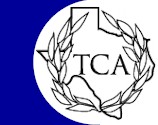 |
 |
||||||||||||||||
|
TCA's Journal ExcerptsAll articles are copyrighted. However, articles may be reproduced for educational purposes with the permission of the editor. Please contact Ginny Lindzey at ginlindzey@lindzey.us, 2321 Westrock Dr., Austin, TX 78704 for authorization. Clodius vs Cicero: The Trial of the Century that Never Took Placeby Steven Perkins, LBJ High School, Austin, TX Texas Classics in Action, Winter 1998. Any student of Roman history knows that neither these words, nor any to their effect, were ever spoken. Yet, for the past three years students in Austin, Texas, have heard just such an introduction as they began their enactment of "The-Trial-of-the-Century-That-Never-Took-Place." Each year since 1995, students in the Latin III class at Lyndon Baines Johnson High School have studied the Catilinarian Conspiracy. After reading selections from the Breviarium of Eutropius covering the climactic events of the Republic, and learning new grammatical constructions, such as conditional sentences and gerundives, these students embark on a twelve-week investigation of the distinguishing activity of Cicero's consulship - the suppression of the Catilinarian Conspiracy. Using the Longman Reader Cicero and Sallust, students read for themselves the accounts of both the orator and the historian on this significant episode in Roman history. Working together they translate the leges de provocatione, or the laws of appeal, that date back to the beginning of the Republic. They also translate the senatus consultum ultimum, that notoriously vague decree of the Senate that either did, or did not, give consuls carte blanche during national emergencies.In addition to their work in Latin, they read in English secondary historical sources that further examine the legality of the S.C.U. and treat the complex topics of hostis and tumultus decrees. Toward the end of this intense study, which is punctuated with animated classroom discussions, the students are assigned character roles to play in the trial that is the summative project of the unit. The trial itself is an enactment of what would have happened had Cicero not fled into voluntary exile in 58 B.C., pressed by Clodius' plebescite that anyone who had put Roman citizens to death without a trial should be denied fire and water. Under Cicero's consulship in 63 b.c., this very thing had happened, with five citizens, including high ranking government officials, being executed for their involvement with Catiline.Each student receives a character sketch that contains basic information about the character's background. Most of the characters are historic personages, and for these, students are encouraged to find out more information to better understand the character. A few characters are fictional, and for these, students must consider what information has been given to them in light of what they know about the culture and political situation of the late Republic. Some liberty has to be taken with history in the involvement of female students. For example, the praetor is almost always female, and the subscriptor for the prosecuting Clodius is the fictional character Hortensia, the imagined daughter of the great Hortensius. Once given their characters, the students must plan how and what they will testify. "Clodius", "Hortensia", and "Cicero" prepare their witnesses and decide on courtroom strategies, and all preparation is done within the framework of what they have learned about the laws and circumstances germane to the case. As with any trial, bribes are a reality, and assassinations have been known to occur. Unlike real life, however, there are rules for assassinations. All murderous acts must take place in front of the teacher, and it is the teacher who determines whether deadly force was, in fact, used. Certain characters, such as "Cicero" and "Clodius", have immunity from assassination for the duration of the trial, and students whose characters are murdered are given a new role. On the day of the trial, the class travels to the 53rd Court in the Travis County Courthouse, where Judge Williams graciously allows the use of her courtroom during the lunch recess. There, after examining the fasces and classical reliefs on the walls, the students quickly change into their togas and stolas, and the trial begins. Witnesses are then examined, testimony is given, and each juror must decide condemno, absolvo, or non liquet. The jury's decision is then presented to the praetor, who must then pronounce the final verdict. For the past three years, the verdict has been the same. . . non fecisse videtur. The students seem to enjoy this project, for it gives students an opportunity to express in a non-traditional way what they have learned throughout the semester. It allows students whose preferred method of expression is in a format other than paper and pencil tests, to achieve success. This project also serves as a means of promoting Latin study, for the trial is video-taped every year, and students in Latin I and II then have the chance to get a foretaste of what lies ahead. |
||||||||||||||||
|
|
|||||||||||||||||
|
Home Page | Main MenuT Last update: May 9, 2000. This site was re-created August 1998 by Ginny Lindzey, Webmistress, Texas Classical Association. All text and graphics are copyrighted. Original photo of arch by Roger Robison. To report problems and to get permission to reprint articles, please contact Ginny at ginlindzey@lindzey.us |
||||||||||||||||
